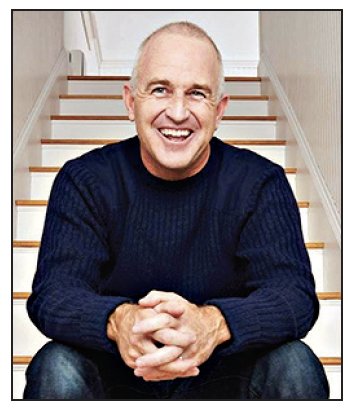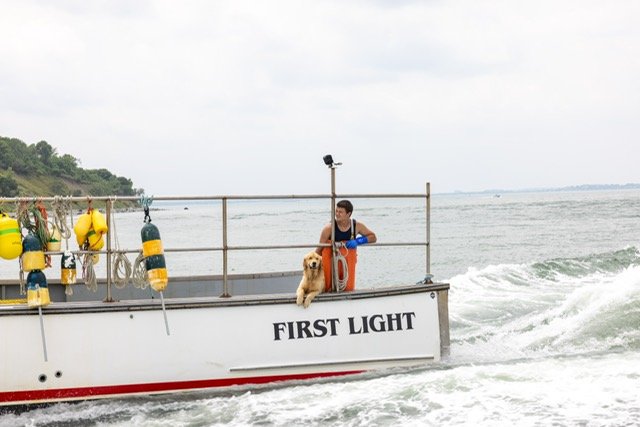Chair Dennis Zaia said the quality of the submissions has been “outstanding, and the fact community members have done that on behalf of the community is just wonderful.” Residents have offered the HRA information about “concept sourcing, potential funding opportunities, new ways of looking at previously discussed ideas, and other communities who have made similar improvements,” he said.
Finn said he proposed three phases “because you can’t wave a magic wand, make an Urban Renewal Plan, and then do everything in one shot. It is too much. So, one step at a time.”
He would like to see the first action step, possibly as soon as this winter, to be adding an extension to Edgewater Road between Nantasket Ave and Hull Shore Drive Extension; first as a driveway, then as a street.
“We build a driveway opening there, and then you have all the lots empty out at Edgewater Road Extension, so we won’t have to deal with the traffic jams at Phipps Street,” said Finn.
Finn said he likes the mission of development, which produces tax revenue, because funds are needed to “program all these other 10 acres of passive public recreational open space, and to fill them with all these great ideas out of the submissions… you can plug them in wherever you like.”
In his proposal, Finn also eliminated all the cottages proposed for the northern end of the property to allow for the HRA’s “number-one abutter, the Department of Conservation and Recreation, to meet the goals of their master plan, which the town supported eight to 15 years ago.”
“If you allow them (DCR) to build a 10- to 12-foot boardwalk, and then another 10-foot raised two directional bicycle lane, then you have an eight-foot travel lane and a 24-foot standard two-way road. This fits within the layout,” said Finn.
Finn said the parcel at the corner of Edgewater Road and Nantasket Avenue, next to the Hull Municipal Lighting Plant, should be deeded to the town, possibly for a community center, and public meetings should be held to decide what to do with the land.
Toward the middle of the property, although not blocking the central vista, Finn envisions four buildings with 15 to 18 units each, which would create a neighborhood and replace the 70 housing units that were demolished in the 1970s, leaving a “big hole in the tax base in the town.”
Finn said a key part of his plan for development is to include the “15% affordable units the HRA already voted.” He explained the affordable units could be in “linkage, and if you can’t fit them or decide not to build any units at all on HRA land, they can be in linkage, like in Boston where you could build the affordable units off site.” He suggested a partnership with the Hull Housing Authority.
“We need lots of affordable housing, but elsewhere,” Lisa French said in her presentation. “It is really important, but this is not the space for it.”
As part of her proposal, French said she would “like to see the HRA parcels as town-owned and for public use…I think the town should own all structures and operate all revenue-generating enterprises, especially parking, and all revenues should go to the town.”
French pointed out there are not any other redevelopment authorities that have lasted as long as the HRA.
“It is really wild it hasn’t disbanded,” she said.
“Having this revert back to the town and be town-owned property with revenues going to the town, that very much resonates with me,” HRA Clerk Adrienne Paquin said. “Not dumping it on them (the town) right now and saying build this, but giving them something that could generate revenue for the town.”
Some features incorporated into French’s proposal include an outdoor amphitheater, which would sit below grade with a stage at sidewalk level and seating on a gradual slope created by building a hillock, an arched pedestrian bridge from the bluff to the sidewalk along the beach above the crosswalk, a below-grade (fenced) rink for winter ice skating and summer roller skating, and outdoor fitness equipment for adults and children. The remaining parcel would be ground level and flat (wheelchair accessible), with a permeable surface that allows for vehicles, amusement rides, a giant slip-and-slide or bounce house, inflated obstacle course, bonfires, picnic tables, and seating for large community gatherings, a permanent marketplace structure for rotating concessions, and an observation dock in the mud flats.
Kelly applauded the “modular” and “phased” approaches for developing the HRA property.
“It is just beautiful; it touches on so many of the ideas that have been shared by people in different ways…it is an inspiration,” Vice Chair Dan Kernan said of French’s presentation.
“It is great to see the ideas in physical form; incredible visualization, absolutely stunning, I love the creativity here, Paquin said. “If we even take one or two of these ideas, what a success – because you have given us a smorgasbord.”
Leonard Markowitz presented the mobile stage proposal, which he created with Mindy Markowitz, Andrew Thorburn, and MJ Walsh. The presentation focused on seven key points: open space principles, the mobile stage along with events, activities, funding, revenue, parking, and next steps.
Markowitz said the proposal “encourages endorsement of open-space principles that preserve natural landscapes for future generations.” The flexible mobile stage would be a platform for community engagement and revenue generation designed for rapid deployment, community benefit, and financial sustainability.
“Open space brings out the intrinsic beauty of our town’s natural resources in a densely populated area. HRA parcels where nature takes the spotlight [are] unburdened by obstructions or permanent structures,” Markowitz said. “It is a sustainable landscape that blends nature and community, resulting in an environment that is conducive to working with the many proposals offered here as well as the DCR Nantasket plan.”
Zaia complimented the group for introducing the open space principles.
“I believe they [open space principles] will, in some shape or form, end up in an Urban Renewal Plan because they will resonate, no matter who reads it at the state level,” he said. “This is a way to use one gadget that will have multiple functions. Pretty clever.”
“Personally, the most important thing for me to come out of this is recognizing and highlighting open space as community space.,” said Paquin. “I agree with you, Dennis, that is something I hope makes its way into any draft Urban Renewal Plan we create.”
“What I love about this is you really created a generator for all the businesses in Hull. The (mobile) stage isn’t going to serve food, it is going to send people to restaurants,” Steven Greenberg said. “The stage will get visitors down here for dinner or to stay for a weekend…this helps give Hull an identity based around an open space environment.”
According to Markowitz, following open space principles can transform the HRA parcels while “utilizing the mobile stage as a dynamic platform for events and activities that will allow a diverse revenue and funding stream, with the aim to become self-sustaining in just four years.”
“Really good, solid foundation in how to go about managing, developing, and funding a community space,” Kernan said. “You chose the mobile stage as your idea, but everything else is deep, thick, and extraordinarily valuable…your supporting work will help everyone else who has come up with ideas.”
The mobile stage/open space proposal outlined direct revenue sources including ticket sales, concessions, and rental fees. Along with these revenue streams, the team asked the HRA to advocate for three new revenue streams: a real estate transaction fee, development assessment fee, and a dog passport initiative.
The consensus was that the presentations were striving to meet the goals of the HRA, which is charged with “creating a sense of place in our community through development that provides tax revenue, open space recreation, job growth, improved business environment, event venues, and parking for Nantasket Beach within an effective and efficient traffic pattern for Hull citizens and visitors.”
Zaia said the community has come forward and demonstrated it is “fully invested in helping the Hull Redevelopment Authority to craft an Urban Renewal Plan that will benefit and enhance the economic vitality of our community … Each of these presentations reflect the work of local Hull citizens who have worked independently and or collaboratively with other Hull citizens to help the HRA look at how the HRA property may be improved.”
For all the details about these proposals, and the others that will be discussed at future meetings, visit the submissions tab at HRA02045.com. To watch the presentations, check Hull Community television online at hulltv.net and on either Comcast or Verizon.
Do you have an opinion on this issue? Click here to write a Letter to the Editor.
































